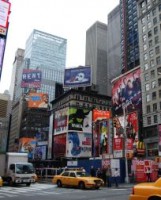Private guides and guided tours in Canada
Private guides in Canada
Private Guide in Montreal - Rene
(Member Since 2015) Languages: English, FrenchOur Montreal city has a lot to offer. From 80 different ethnic group that each have at least one restarant to old city, downton and an underground city where you can walk for 22 miles without walking at the same place.Montreal is also known for a very low crime rate and me and my family realy enjoy this feature.

Canada
Language: English
Currency: Canadian dollar (CAD)
Calling Code: +1
CAPITAL CITY OF Canada: Ottawa
LANGUAGE OF Canada: English
CURRENCY OF Canada: Canadian dollar (CAD)
COMMENTS ABOUT Canada:
Canada is the second largest country by area in the world (after Russia) and the largest in North America.
Calling Code : 1
A land of vast distances and rich natural resources, Canada became a self-governing dominion in 1867 while retaining ties to the British crown. Economically and technologically the nation has developed in parallel with the US, its neighbor to the south across an unfortified border. Canada's paramount political problem is meeting public demands for quality improvements in health care and education services after a decade of budget cuts. The issue of reconciling Quebec's francophone heritage with the majority anglophone Canadian population has moved to the back burner in recent years; support for separatism abated after the Quebec government's referendum on independence failed to pass in October of 1995.
CLIMATE OF Canada: Trying to distill the climate of Canada into an easy to understand statement is impossible, given the vast area that this country occupies. The southernmost point of mainland southern Ontario, Point Pelee, and the nearby islands in Lake Erie at a very similar latitude to northern California, and has a climate similar to the eastern US. Iqaluit, the capital of Nunavut, is just south of the Arctic Circle and remains very cold for most of the year.
RELIGION OF Canada: Roman Catholic 46%, Protestant 36%, other 18%
note: based on the 1991 census
POPULATION OF Canada: 32,507,874 (July 2004 est.)>
ECONOMY OVERVIEW OF Canada: As an affluent, high-tech industrial society, Canada today closely resembles the US in its market-oriented economic system, pattern of production, and high living standards. Since World War II, the impressive growth of the manufacturing, mining, and service sectors has transformed the nation from a largely rural economy into one primarily industrial and urban. The 1989 US-Canada Free Trade Agreement (FTA) and the 1994 North American Free Trade Agreement (NAFTA) (which includes Mexico) touched off a dramatic increase in trade and economic integration with the US. As a result of the close cross-border relationship, the economic sluggishness in the United States in 2001-02 had a negative impact on the Canadian economy. Real growth averaged nearly 3% during 1993-2000, but declined in 2001, with moderate recovery in 2002-03. Unemployment is up, with contraction in the manufacturing and natural resource sectors. Nevertheless, given its great natural resources, skilled labor force, and modern capital plant Canada enjoys solid economic prospects. Solid fiscal management has produced a long-term budget surplus which is substantially reducing the national debt, although public debate continues over how to manage the rising cost of the publicly funded healthcare system. Trade accounts for roughly a third of GDP. Canada enjoys a substantial trade surplus with its principal trading partner, the United States, which absorbs more than 85% of Canadian exports. Roughly 90% of the population lives within 160 kilometers of the US border.



 French
French Spanish
Spanish Russian
Russian

